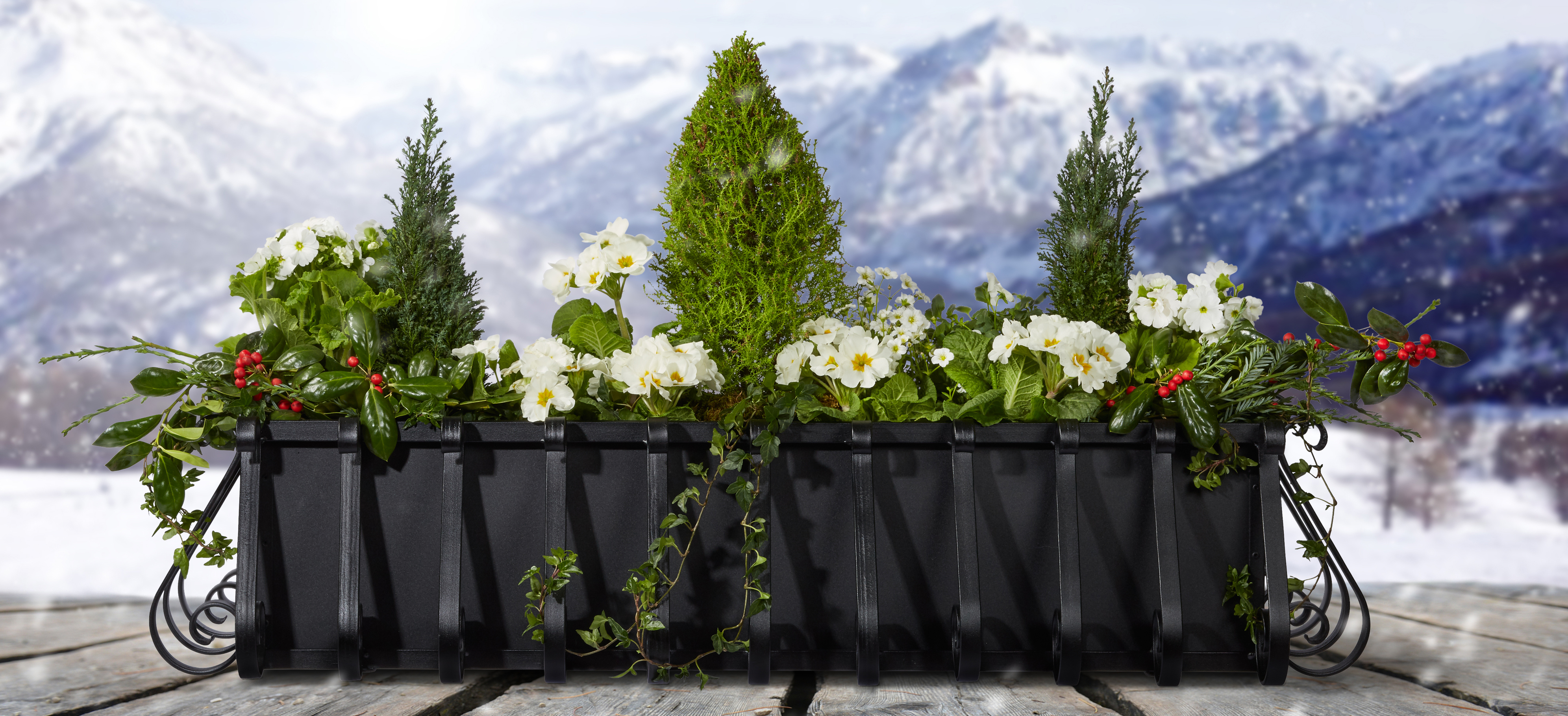Winterizing Window Boxes

Container gardening is a beautiful, exciting, and fun way to cultivate plants and flowers in small spaces. Whether you enjoy gardening in square outdoor planters on your patio, large trough planter boxes in your backyard, stylishly tall box planters on your porch, or classic window box planters, the challenge of creating thriving gardens in small spaces is thrilling.
But the challenge of transitioning your containers from fall to winter is far less exciting. For any container garden, it’s important to take the proper steps to help your plants survive and keep your window flower boxes looking lovely year-round. After all, plants in containers are more vulnerable to the cold than plants in the ground, since their roots are more exposed. Window planter boxes need special attention, since they are lifted off the ground with the bottom of the planter box exposed.
Here’s a short guide on how to prep your window boxes for winter.
Step 1: Know your hardiness zone
The USDA Plant Hardiness Zone Map divides the country into sections based on temperature. Knowing which zone you live in will help you determine which plants to grow and what to do with them in the winter.
Step 2: Decide your strategy
There are a few different strategies that you can take with your window box.
1. Plant a winter-hardy window box garden
The first option for your window box planter is to remove your summer annuals and replace them with a beautiful winter garden. If you want to pursue this option, be sure that your window box can tolerate the cold weather. Wood window boxes will likely need to be sealed or painted to withstand the cold. Additionally, make sure that your window box has adequate drainage to prevent root rot. If you’re looking for a fantastic window box planter that meets all of these requirements, be sure to check out our wide variety of options and styles here.
To find plants that can withstand the winter in your area, visit your local garden store. It may be a good idea to find plants are even more cold tolerant than the zone you live in, since containers are more susceptible to freezing. Ask the professionals at your local garden center what they would recommend.
2. Protecting your window box
If you live in climate that doesn’t have many hard freezes, you have the option of protecting your existing window box. One great way to do this is by moving your window planter to a sunroom or garage. This is especially easy with small window boxes, or window boxes with removable liners. If you don’t have a space to move it, or if your window box planter can’t be removed, you can simply cover it with plastic or a burlap sack. This is the riskiest option since it provides the least protection from the elements, so only choose this if the cold snaps in your area are short lived.
3. Taking cuttings
If you live in zone that experiences cold, snowy winters, but you want to replant the same annuals next year, this may be a good strategy for you. Before attempting to propagate your annual, do some light research to make sure that specific plant will thrive when propagated. Follow the instructions for your plant to make sure they make it through the cold months.
Whatever option you choose, don’t worry - spring will get here sooner than you think!
